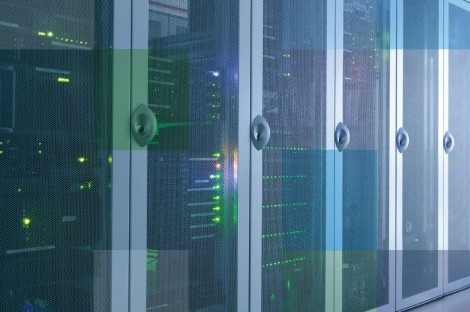The Future of Commodity Systems in the Data CenterThe Future of Commodity Systems in the Data Center
With cloud, data center, and service providers looking to deliver better performance and options, here's how new commodity systems are making an impact

We’re at a very interesting point in time during the cloud infrastructure era. The modern data center continues to evolve from physical to virtual, numerous management stacks being abstracted into the logical, or virtual, layer. Is another data center evolution around the corner? Will new kinds of compute platforms allow for a more open data center model? We’ve already begun to see a shift in the way data centers provide services. A new kind of commodity architecture is making its way into the consumer, cloud provider, and even service provider data center.
Customers are being given much greater options around what they want deployed and how they want it controlled. With all of this in mind, it’s important to see how commodity server platforms are already making an impact in your cloud architecture.
Bare Metal Cloud and Commodity Servers
Although the conversation has certainly picked up recently, white-box and commodity offerings from a few data center providers is actually a reality. In a recent article on DCK we outlined Rackspace's dedicated servers which behaved like cloud VMs. The offering, called OnMetal, provides cloud servers which are single-tenant, bare-metal systems. You can provision services in minutes via OpenStack, mix and match with other virtual cloud servers, and customize performance delivery. Basically, you can design your servers based on specific workload or application needs. This includes optimizations around memory, IO, and compute. As far as the base image goes, Rackspace has CentOS, CoreOS, Debian, Fedora, and Ubuntu images available.
It’s important to note that Rackspace isn’t alone in this space. Internap has been offering powerful metal servers, and so has SoftLayer, now an IBM company. The servers provide the raw horsepower you demand for your processor-intensive and disk IO-intensive workloads. From there, you can configure your server to your exact specifications via a portal or API and deploy in real time to any SoftLayer data center. With all of that in mind, the amount of bare metal customization that you can do within the Softlayer cloud is pretty impressive. Storage, memory, network uplinks, power supplies, GPUs and even mass storage arrays can be customized. You can even get an entire customized physical rack.
Cloud-Ready Platforms as Commodity
Big server vendors have certainly heard the message. Cloud, data center, and service providers are all looking at better ways to control performance, price, and the compute platform. So why not get in the game and help out? Recently, HP and Foxconn formed a joint venture to create a new line of cloud-optimized servers specifically targeting service providers. According to the press release, the new product line will specifically address compute requirements of the world’s largest service providers by delivering low total cost of ownership (TCO), scale, and services and support. The line will complement HP’s existing ProLiant server portfolio, including Moonshot. The idea is to cut out the software as well as the bells and whistles while still keeping HP support involved. From there, these servers aim at large service providers to help them address the data center challenges of mobile, cloud, and Big Data.
The cool part with HP's Cloudline servers is that these are full, rack-scale systems, which are optimized for the largest cloud data centers and built on open industry standards. Vendors within the enterprise vendor community are offerings options as well. Storage solutions from X-IO Technologies focus on absolutely pure performance at 100 percent capacity. They build in high availability and redundancy,but don’t offer snapshotting, dedup, replication, thin provisioning, and a few other software-level storage features. It does, however, carry a five-year warranty on the appliance.
Of course, there will still be places where this doesn’t work. However, for a large number of organizations moving toward a more logically controlled storage platform this is very exciting. In some cases the hypervisor or software-defined storage layer can deliver enterprise storage features like encryption, dedup and more directly from the virtual control layer.
Future Cloud Ecosystem Will Be More Diverse
The growth of cloud computing has also allowed for greater diversity within the data center platform. We now have more hosting options, greater delivery capacities, and more support from powerful systems located all over the world. Adoption of bare metal and commodity systems will certainly continue to grow. Fueled by new concepts around the Internet of Things and mobility, data center will simply have to support more users, carrying a lot more data.
Consider this from a recent Cisco Service Provider forecast: globally, 54 percent of mobile devices will be smart devices by 2018, up from 21 percent in 2013. The vast majority of mobile data traffic (96 percent) will originate from these smart devices by 2018. As everything in technology, we will continue to see systems evolve to meet modern demands. Vendors like Cisco, HP, Dell and others – who serve the more traditional server market – will need to evolve alongside organizations seeking a more “commoditized” approach to data center architecture.
As modern organizations take on new challenges around cloud and content delivery, more options will make the design and architecture process a bit easier. In many cases, you simply need raw power, without any software-based bells and whistles. This is becoming more and more the case as software-defined solutions and virtualization help abstract the logical layer from the physical platform. We can now control resources, route traffic, and manage users from the hypervisor and the cloud. This allows the underlying hardware to solely focus on resource delivery, leaving the management layer elsewhere.
About the Author
You May Also Like









